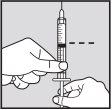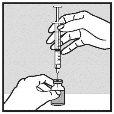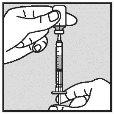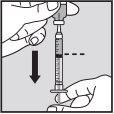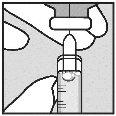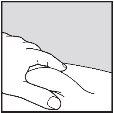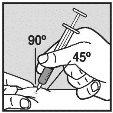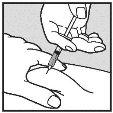
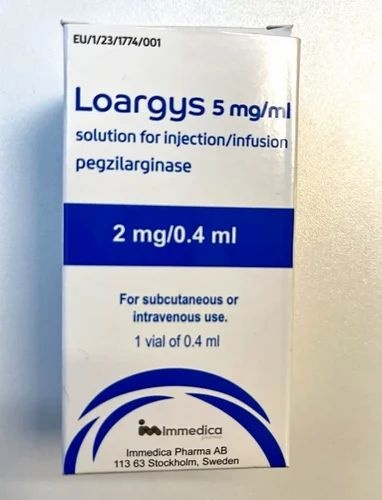
ЛОАРГІС 5 мг/мл РОЗЧИН ДЛЯ ІН'ЄКЦІЙ ТА ДЛЯ ПЕРФУЗІЇ

Запитайте лікаря про рецепт на ЛОАРГІС 5 мг/мл РОЗЧИН ДЛЯ ІН'ЄКЦІЙ ТА ДЛЯ ПЕРФУЗІЇ

Інструкція із застосування ЛОАРГІС 5 мг/мл РОЗЧИН ДЛЯ ІН'ЄКЦІЙ ТА ДЛЯ ПЕРФУЗІЇ
Введення
Опис: інформація для пацієнта
Loargys 5 мг/мл розчин для ін'єкцій та інфузій
пегзиларгіназа
Цей лікарський засіб підлягає додатковому моніторингу, що прискорить виявлення нової інформації про його безпеку. Ви можете допомогти, повідомляючи про будь-які побічні ефекти, які ви можете мати. Остання частина розділу 4 містить інформацію про те, як повідомляти про ці побічні ефекти.
Прочитайте уважно весь опис перед тим, як почати приймати цей лікарський засіб, оскільки він містить важливу інформацію для вас.
- Збережіть цей опис, оскільки вам може знадобитися знову його прочитати.
- Якщо у вас є якісь питання, проконсультуйтеся з вашим лікарем або медсестрою.
- Якщо ви відчуваєте побічні ефекти, проконсультуйтеся з вашим лікарем або медсестрою, навіть якщо це побічні ефекти, які не вказані в цьому описі. Див. розділ 4.
Зміст опису
- Що таке Loargys і для чого він використовується
- Що потрібно знати перед тим, як почати приймати Loargys
- Як застосовується Loargys
- Можливі побічні ефекти
- Збереження Loargys
- Зміст упаковки та додаткова інформація
- Інструкції з використання
1. Що таке Loargys і для чого він використовується
Loargys містить активну речовину пегзиларгіназу, яка є модифікованою людською ферментом, виробленою за допомогою технології рекомбінантної ДНК. Лікарський засіб використовується для лікування дефіциту аргінази 1 (ARG1-D), також відомої як гіпераргінінемія, у дорослих, підлітків і дітей від 2 років.
Пацієнти з ARG1-D мають низькі рівні ферменту аргінази. Ця фермент допомагає організмові контролювати рівні аргініну, амінокислоти, яка потрібна організмові для виробництва білків. Якщо аргінін не контролюється, він може накопичуватися в організмі та викликати симптоми, такі як проблеми з м'язовим контролем.
Loargys використовується в поєднанні з іншими методами лікування захворювання. Серед них можна виділити:
- дієту з низьким вмістом білків
- харчові добавки з есенціальними амінокислотами
- лікарські засоби для лікування інших симптомів захворювання, таких як лікарські засоби, які знижують рівні амонію в організмі.
Як діє Loargys
Пегзиларгіназа, активна речовина Loargys, діє подібно до природної ферменту аргінази, яка відсутня або не функціонує правильно у пацієнтів з ARG1-D. Це знижує рівні аргініну в крові, тим самим знижуючи симптоми захворювання.
2. Що потрібно знати перед тим, як почати приймати Loargys
Не приймайте Loargys
- якщо ви мали серйозну алергічну реакцію на пегзиларгіназу або на будь-який інший компонент цього лікарського засобу (перелічені в розділі 6).
Попередження та обережність
Loargys може викликати алергічні реакції. Це більш ймовірно після перших доз.
Відразу зупиніть ін'єкцію та зверніться до вашого лікаря або служби швидкої допомоги, якщо ви відчуваєте будь-які з наступних симптомів серйозної алергічної реакції: кропив'янка, свербіж по всьому тілу, тиснява в грудній клітці, труднощі з диханням або низький кров'яний тиск. Ваш лікар може вирішити, що вам потрібно додаткове медичне лікування для профілактики або лікування алергічної реакції.
Під час лікування ваш лікар буде проводити аналіз крові для перевірки того, яка доза Loargys підходить вам.
Діти та підлітки
Лікарський засіб не повинен використовуватися у дітей молодших за 2 роки, оскільки не відомо, чи безпечний і ефективний Loargys у цій віковій групі.
Використання Loargys з іншими лікарськими засобами
Повідомте вашого лікаря, якщо ви приймаєте, нещодавно приймали або можете приймати будь-який інший лікарський засіб.
Вагітність, лактація та фертильність
Якщо ви вагітні або перебуваєте в період лактації, вважаєте, що можете бути вагітною або плануєте завагітніти, проконсультуйтеся з вашим лікарем перед тим, як використовувати цей лікарський засіб. Не рекомендується використання Loargys, якщо ви вагітні.
Не відомо, чи проникає лікарський засіб у грудне молоко. Якщо ви перебуваєте в період лактації, проконсультуйтеся з вашим лікарем перед тим, як приймати цей лікарський засіб. Ваш лікар допоможе вам вирішити, чи потрібно перервати лактацію чи лікування.
Водіння транспортних засобів та використання машин
Вплив Loargys на здатність водити транспортні засоби та використовувати машини є нульовим або незначним.
Loargys містить натрій та калію
Цей лікарський засіб містить менше 1 ммоль натрію (23 мг) на дозу; тобто, він практично не містить натрію. Цей лікарський засіб містить калію, менше 1 ммоль (39 мг) на дозу, тобто, він практично не містить калію.
3. Як застосовується Loargys
Loargys буде застосовуватися медичним працівником. Ваш лікар вирішить, яку кількість Loargys вам потрібно.
Рекомендована початкова доза Loargys становить 0,1 мг на кілограм ваги тіла, застосовується один раз на тиждень. Ваш лікар може збільшити або зменшити дозу для підтримання рівня аргініну в крові під контролем. Ваш лікар призначить періодичні аналізи крові для перевірки рівня аргініну в крові та зміни дози, якщо це необхідно.
Loargys застосовується шляхом інфузії (капельного введення) безпосередньо в вену або шляхом підшкірної ін'єкції, залежно від того, що вважає за потрібне ваш лікар.
Можливо, ваш лікар вирішить, що вам можна застосовувати Loargys вдома у вигляді підшкірної ін'єкції. Після отримання інструктажу від лікаря або медсестри ви можете самостійно вводити Loargys (див. інструкції в розділі 7).
Використовуйте цей лікарський засіб завжди точно так, як описано в цьому описі або як вказав ваш лікар, фармацевт або медсестра. У разі сумнівів проконсультуйтеся з вашим лікарем, фармацевтом або медсестрою.
Якщо ви прийняли більше Loargys, ніж потрібно
Ваш лікар буде стежити за тим, щоб ви приймали потрібну кількість Loargys. Якщо вам було введено надмірну кількість Loargys, рівень аргініну в крові може стати надто низьким. Симптоми можуть включати нудоту, блювоту, діарею та втому. Якщо ви або ваш лікар підозрюють, що вам було введено надмірну кількість Loargys, вам потрібно буде піддаватися тісному спостереженню та отримувати необхідне лікування.
Якщо ви забули застосувати «Loargys»
Якщо ви забули прийняти дозу Loargys, зверніться до вашого лікаря, щоб призначити наступну дозу якнайшвидше. Не слід приймати подвійну дозу для компенсації пропущених доз, і між дозами повинно проходити не менше 4 днів.
Якщо ви припините лікування Loargys
Ваш лікар вирішить, чи потрібно припинити використання Loargys. Якщо ви припините лікування Loargys, ймовірно, рівень аргініну в крові знову підвищиться.
Якщо у вас є якісь інші питання щодо використання цього лікарського засобу, проконсультуйтеся з вашим лікарем або медсестрою.
4. Можливі побічні ефекти
Як і всі лікарські засоби, цей лікарський засіб може викликати побічні ефекти, хоча не всі люди їх відчувають.
Дуже часті(можуть впливати на більше 1 з 10 осіб)
- Реакція в місці ін'єкції. Симптоми можуть включати біль, набряк, подразнення, червоність та висипку на шкірі навколо місця ін'єкції.
- Алергічна реакція (гіперчутливість) Симптоми можуть включати набряк обличчя, висипку на шкірі та раптове почервоніння шкіри (рубор).
Повідомлення про побічні ефекти
Якщо ви відчуваєте будь-які побічні ефекти, проконсультуйтеся з вашим лікарем або медсестрою, навіть якщо це побічні ефекти, які не вказані в цьому описі. Ви також можете повідомити про них безпосередньо через національну систему повідомлення, включену до Додатку V. Повідомляючи про побічні ефекти, ви можете допомогти надати більше інформації про безпеку цього лікарського засобу.
5. Збереження Loargys
Тримайте цей лікарський засіб поза зоною видимості та досягнення дітей.
Не використовуйте цей лікарський засіб після закінчення терміну придатності, вказаного на етикетці. Термін придатності - останній день місяця, який вказано.
Зберігайте в холодильнику (між 2 °C та 8 °C). Не заморожуйте. Зберігайте в оригінальній упаковці для захисту від світла.
Після видалення з холодильника Loargys можна зберігати протягом 2 годин при кімнатній температурі не вище 25 °C.
Лікарські засоби не повинні викидатися у водопровідні труби чи сміття. Таким чином, ви допоможете захистити довкілля.
6. Зміст упаковки та додаткова інформація
Склад Лоаргісу
- Активний інгредієнт - пегзиларгіназа.
- Кожна ампула об'ємом 0,4 мл містить 2 мг пегзиларгінази.
- Кожна ампула об'ємом 1 мл містить 5 мг пегзиларгінази.
- Інші інгредієнти - хлорид натрію, дигідрогенфосфат калію, дифосфат калію, гліцерол, хлоридна кислота, гідроксид натрію та вода для ін'єкцій. Лоаргіс містить натрій та калій (див. розділ 2).
Вигляд продукту та вміст упаковки
Лоаргіс - це безбарвна або легенько жовта чи легенько рожева, прозора чи легенько опалесцентна рідина у прозорій скляній ампулі.
Кожна упаковка містить 1 ампулу об'ємом 0,4 мл або 1 мл розчину для ін'єкції/інфузії.
Можливо, що тільки деякі розміри упаковок будуть продаватися.
Власник дозволу на розміщення продукції на ринку та відповідальна особа за виробництво
Immedica Pharma AB
113 63 Стокгольм
Швеція
Відповідальна особа за виробництво
Unimedic AB
Storjordenvägen 2
864 31 Матфорс
Швеція
Дата останнього перегляду цієї інструкції
Цей лікарський засіб був авторизований у "виключних обставинах". Це означає, що через рідкість цієї хвороби не було можливості отримати повну інформацію про цей лікарський засіб.
Європейське агентство з лікарських засобів буде щорічно переглядати нову інформацію про цей лікарський засіб, яка може бути доступна, і цю інструкцію буде оновлено при необхідності.
Інші джерела інформації
Детальна інформація про цей лікарський засіб доступна на сайті Європейського агентства з лікарських засобів:. Також існують посилання на інші сайти про рідкісні хвороби та орфанні лікарські засоби.
На сайті Європейського агентства з лікарських засобів можна знайти цю інструкцію всіма мовами Європейського Союзу/Європейської економічної зони.
Ви також можете знайти цю інструкцію та затверджений навчальний матеріал про цей лікарський засіб, сканувавши QR-код, який знаходиться нижче, за допомогою смартфона або через сайт http://www.loargyspatient.eu

- Інструкції з використання
У наступних кроках описано, як підготувати та ввести Лоаргіс вдома у вигляді підшкірної ін'єкції. Якщо ви будете вводити цей лікарський засіб самостійно, ваш лікар або медсестра покажуть вам, як підготувати та ввести Лоаргіс.
Не вводьте цей лікарський засіб самостійно, якщо ви не пройшли навчання та не розумієте кроків, які потрібно виконати.
Ваш лікар призначить правильну дозу та скаже, який об'єм (у мл) потрібно вводити. Можливо, вам потрібно буде використовувати більше однієї ампули, щоб отримати правильну дозу, і можливо, вам потрібно буде розділити загальну дозу на кілька ін'єкцій. Ваш лікар або медсестра скажуть вам точно, що потрібно робити.
Кожна ампула призначена для одного використання, завжди використовуйте нову ампулу для кожної дози.
Лоаргіс не повинен змішуватися з іншими розчинами для ін'єкції чи інфузії.
Не агітувати.
Підготовка:
Переконайтесь, що у вас є все необхідне для ін'єкції чи ін'єкцій:
- Ампула(и) Лоаргісу
- Градуйована шприц
- 1 велика голка (наприклад, калібр 18) на ампулу для витягування дози
- 1 мала голка (наприклад, калібр 26-27) на ін'єкцію
- Ватні тампони
- Газова подушка
- Пластір, якщо потрібно
- Контейнер для колючих предметів
|
|
|
|
|
|
Витягування розчину з ампули:
| |
|
|
|
|
| |
|
|
|
|
| |
| |
| |
Примітка: якщо розчин не буде використовуватися негайно, захистіть шприц від світла. Після підготовки Лоаргіс може зберігатися при кімнатній температурі (до 25 °C) протягом максимум 2 годин до введення. Після цього часу підготовлений Лоаргіс не може бути використаний та повинен бути викинутий. |
Введення дози:
Перевірте візуально, чи є правильний об'єм у шприці. Об'єм на ін'єкцію не повинен перевищувати 1 мл. Якщо потрібно, повинні бути зроблені кілька ін'єкцій у різних місцях. | |
Не вводьте у шрамну тканину чи у червоні, запальні чи опухлі місця. Якщо вводите у живіт, уникайте місця, яке безпосередньо оточує пупок. Якщо потрібно зробити більше однієї ін'єкції для введення однієї дози Лоаргісу, місця ін'єкції повинні бути розташовані на відстані не менше 3 см один від одного. |
|
| |
|
|
|
|
Змініть місце ін'єкції та переконайтесь, що нове місце ін'єкції знаходиться на відстані не менше 3 см. Натисніть повільно на поршень, доки не буде введено необхідний об'єм. Повторіть, доки не буде введена повна доза (у мл). Зawsше використовуйте нову малу голку для кожної ін'єкції.Нагадування:якщо потрібно вводити об'єм більше 1 мл Лоаргісу, |
|
| |
|
Зверніть увагу на дату ін'єкції та всі місця, де було зроблено ін'єкцію, це допоможе вам використовувати інше місце ін'єкції для наступної ін'єкції.
--------------------------------------------------------------------------------------------------------------------
Ця інформація призначена лише для медичних працівників:
Лоаргіс показаний для внутрішньовенної інфузії чи підшкірної ін'єкції.
Використовуйте асептичну техніку при підготовці та введенні Лоаргісу.
Не агітувати.
Інструкції з підготовки
- Визначте загальний об'єм Лоаргісу, який потрібно введення (та кількість ампул, необхідних) залежно від ваги та рівня дози пацієнта.
- Видаліть ампулу(и) з холодильника, щоб вони досягли кімнатної температури.
- Перед введенням візуально перевірте ампулу на наявність частинок та забарвлення.
- Лоаргіс - це безбарвна чи легенько жовта чи легенько рожева, прозора чи легенько опалесцентна рідина, практично вільна від видимих сторонніх частинок.
- Викиньте будь-яку ампулу, яка не відповідає цій появі.
- Витягніть заплановану дозу у шприц.
- Було доведено хімічну та фізичну стабільність підготовленої дози протягом 2 годин при зберіганні при кімнатній температурі до 25 °C або протягом 4 годин, якщо зберігати у холодильнику при температурі між 2 °C та 8 °C. Якщо продукт не буде використаний у цих часових межах, його потрібно викинути. З мікробіологічної точки зору продукт потрібно використовувати негайно після реконструкції.
Для внутрішньовенної інфузії
- Розбавте хлоридом натрію 9 мг/мл (0,9%) розчином для ін'єкції, щоб отримати бажаний об'єм інфузії (максимальна концентрація пегзиларгінази 0,5 мг/мл).
- Введіть внутрішньовенну інфузію протягом не менше 30 хвилин.
- Не змішуйте інші лікарські засоби з Лоаргісом чи не вводьте інші лікарські засоби одночасно через ту саму лінію внутрішньовенного доступу.
Для підшкірної ін'єкції
- Введіть розчин без розбавлення шляхом підшкірної ін'єкції у живіт, у бічну сторону стегна чи у бічну чи задню частину верхньої частини рук. Чергуйте місця ін'єкції між дозами.
- Не вводьте у шрамну тканину чи у червоні, запальні чи опухлі місця.
- Якщо вводите у живіт, уникайте місця, яке безпосередньо оточує пупок.
- Якщо потрібно зробити більше однієї ін'єкції для введення однієї дози Лоаргісу, місця ін'єкції повинні бути розташовані на відстані не менше 3 см один від одного.
Викиньте невикористаний лікарський засіб.
Не потрібно спеціальних вимог до викинення.
- Країна реєстрації
- Діючі речовини
- Потрібен рецептТак
- Виробник
- Інформація є довідковою і не є медичною порадою. Перед прийомом будь-яких препаратів обов'язково проконсультуйтеся з лікарем. Oladoctor не несе відповідальності за медичні рішення, прийняті на основі цього контенту.
- Альтернативи до ЛОАРГІС 5 мг/мл РОЗЧИН ДЛЯ ІН'ЄКЦІЙ ТА ДЛЯ ПЕРФУЗІЇФорма випуску: РОЗЧИН ДЛЯ ІНФУЗІЙ, ЩО ВВОДИТЬСЯ ІН'ЄКЦІЙНО, 100 ОДДіючі речовини: laronidaseВиробник: Sanofi B.V.Потрібен рецептФорма випуску: РОЗЧИН ДЛЯ ІНФУЗІЙ, ЩО ВВОДИТЬСЯ ІН'ЄКЦІЙНО, 30 мг/млДіючі речовини: cerliponase alfaВиробник: Biomarin International LimitedПотрібен рецептФорма випуску: РОЗЧИН ДЛЯ ІНФУЗІЙ, ЩО ВВОДИТЬСЯ ІН'ЄКЦІЙНО, НевідомоДіючі речовини: imigluceraseВиробник: Sanofi B.V.Потрібен рецепт
Лікарі онлайн щодо ЛОАРГІС 5 мг/мл РОЗЧИН ДЛЯ ІН'ЄКЦІЙ ТА ДЛЯ ПЕРФУЗІЇ
Консультація щодо дозування, побічних ефектів, взаємодій, протипоказань та поновлення рецепта на ЛОАРГІС 5 мг/мл РОЗЧИН ДЛЯ ІН'ЄКЦІЙ ТА ДЛЯ ПЕРФУЗІЇ – за рішенням лікаря та згідно з місцевими правилами.




